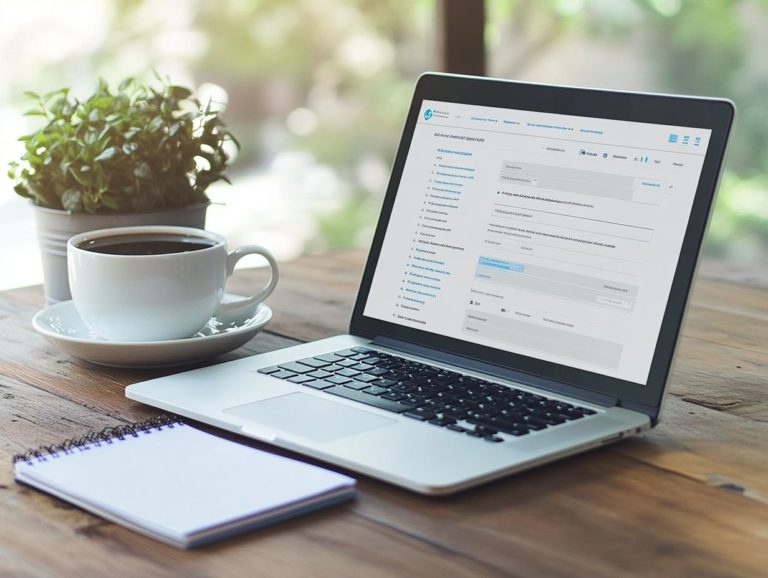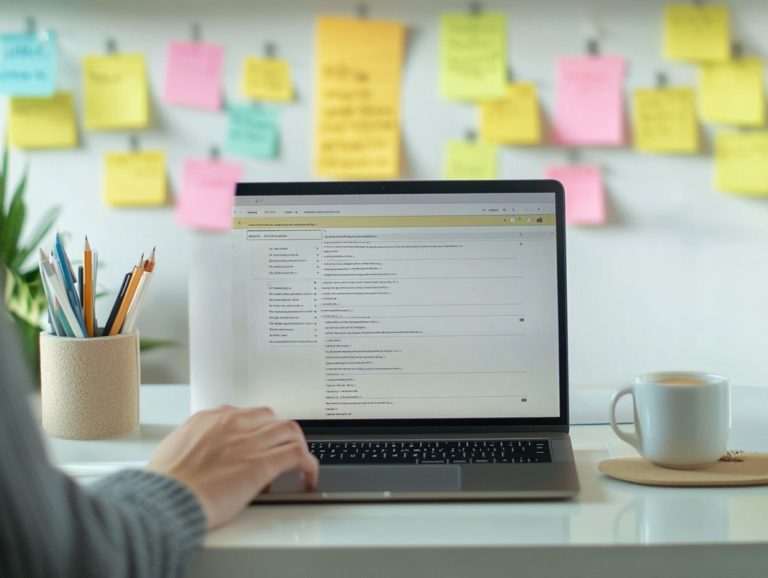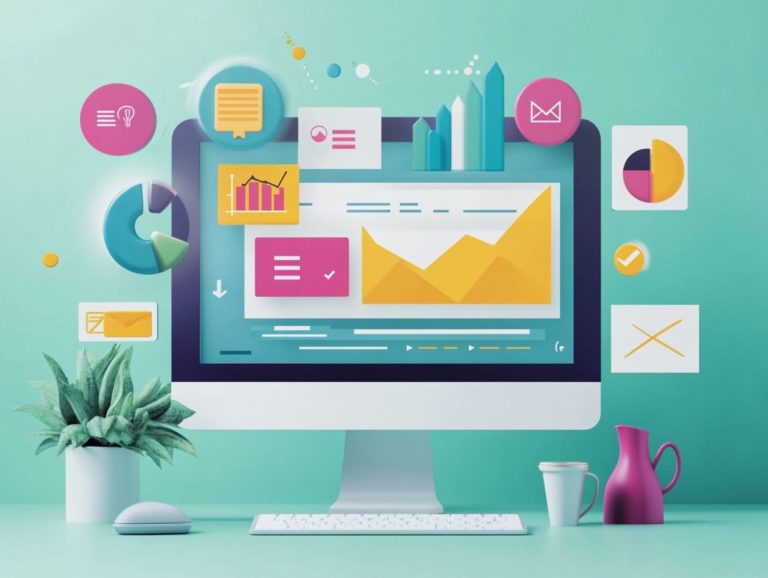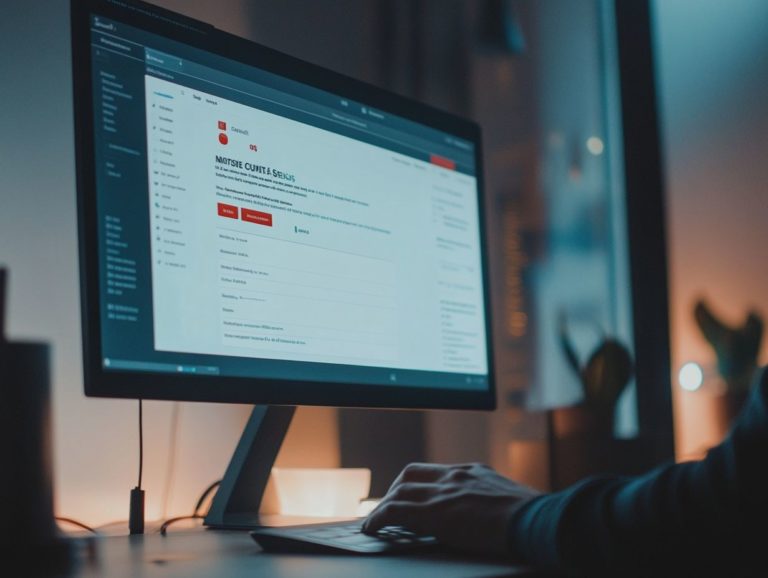Creating a Winning Email Follow-Up Strategy
Let's Set Up Your Lead Generation Strategy
Fill out the form below, and our team will get in touch with you to create a tailored solution for your business.
In today’s fast-paced digital world, effective communication is essential. Email follow-ups are key for building connections and achieving results.
This article explores the significance of follow-up emails, highlighting their importance in both personal and professional spheres.
You will find a breakdown of the essential components of a successful follow-up strategy, covering everything from personalization and optimal timing to crafting compelling content.
Explore best practices, automation techniques, and methods to measure the success of your efforts. Ensure your messages resonate and achieve their intended impact.
Contents
- Key Takeaways:
- Understanding the Importance of Email Follow-Up
- Key Elements of a Successful Follow-Up Strategy
- Let's Set Up Your Lead Generation Strategy
- Best Practices for Writing Follow-Up Emails
- Let's Set Up Your Lead Generation Strategy
- Automating Your Follow-Up Process
- Measuring the Success of Your Follow-Up Strategy
- Frequently Asked Questions
- Let's Set Up Your Lead Generation Strategy
Key Takeaways:

- Follow-up emails are crucial for successful communication and building relationships with clients. They can increase response rates and improve customer satisfaction.
- Personalization, timing, and effective subject lines are key elements of a successful follow-up strategy. Tailor your emails to the recipient and send them at the right time for maximum impact.
- Writing engaging and persuasive content, using calls-to-action, and setting up follow-up sequences are best practices for crafting effective follow-up emails. Automation tools can also streamline the process and save time.
Understanding the Importance of Email Follow-Up
Recognizing the value of email follow-up is essential for sales professionals seeking to enhance their communication channels and improve engagement with potential clients throughout the sales cycle.
A well-crafted follow-up strategy increases response rates and strengthens customer relationships. It plays a crucial role in client outreach and customer acquisition efforts.
Each follow-up email serves as a reminder of the valuable offers and digital resources available. This ensures that potential clients feel appreciated and well-informed as they navigate their decision-making process.
Why Follow-Up Emails Matter
Follow-up emails are vital touchpoints in your engagement process. They significantly increase the chances of positive interactions and reinforce your follow-up etiquette.
These communications serve as reminders of previous conversations and show your genuine interest and commitment. A well-timed follow-up can dramatically boost response rates, inviting recipients to engage further and keeping the dialogue active.
To maximize the impact of these messages, implement strategic response strategies. Vary the timing and tone based on the context of your interactions. Generally, sending a follow-up within 24 to 48 hours after your initial outreach is ideal. This timeframe allows your recipient enough time to consider their response while maintaining momentum.
Key Elements of a Successful Follow-Up Strategy
To create a winning follow-up strategy, focus on these key elements:
The effective use of email templates can streamline your communication, ensuring clarity and professionalism. Personalization is vital; tailor your messages to resonate with the recipient and create a genuine connection.
A well-planned timing strategy can significantly impact your results. Align your outreach with the recipient’s preferences and busy periods to enhance the likelihood of engagement and positive responses.
Personalization and Timing
Personalization and timing greatly influence the effectiveness of your follow-up emails. Ensure they resonate with recipients and prompt timely interaction.
Let's Set Up Your Lead Generation Strategy
Fill out the form below, and our team will get in touch with you to create a tailored solution for your business.
When crafting these messages, tailor the content to reflect the recipient’s specific needs, interests, and previous interactions. This not only helps you establish a connection but also boosts the likelihood of a response.
Understanding the optimal timing for follow-ups is crucial. Studies show that certain days or even specific times can enhance engagement rates. By analyzing recipient behavior like open rates and response times you can develop an effective strategy that guides how often to reach out without overwhelming them.
This thoughtful consideration cultivates a relationship that feels both personal and relevant.
Start crafting your follow-up emails today! Don t miss the chance to connect and engage with your clients effectively.
Effective Subject Lines
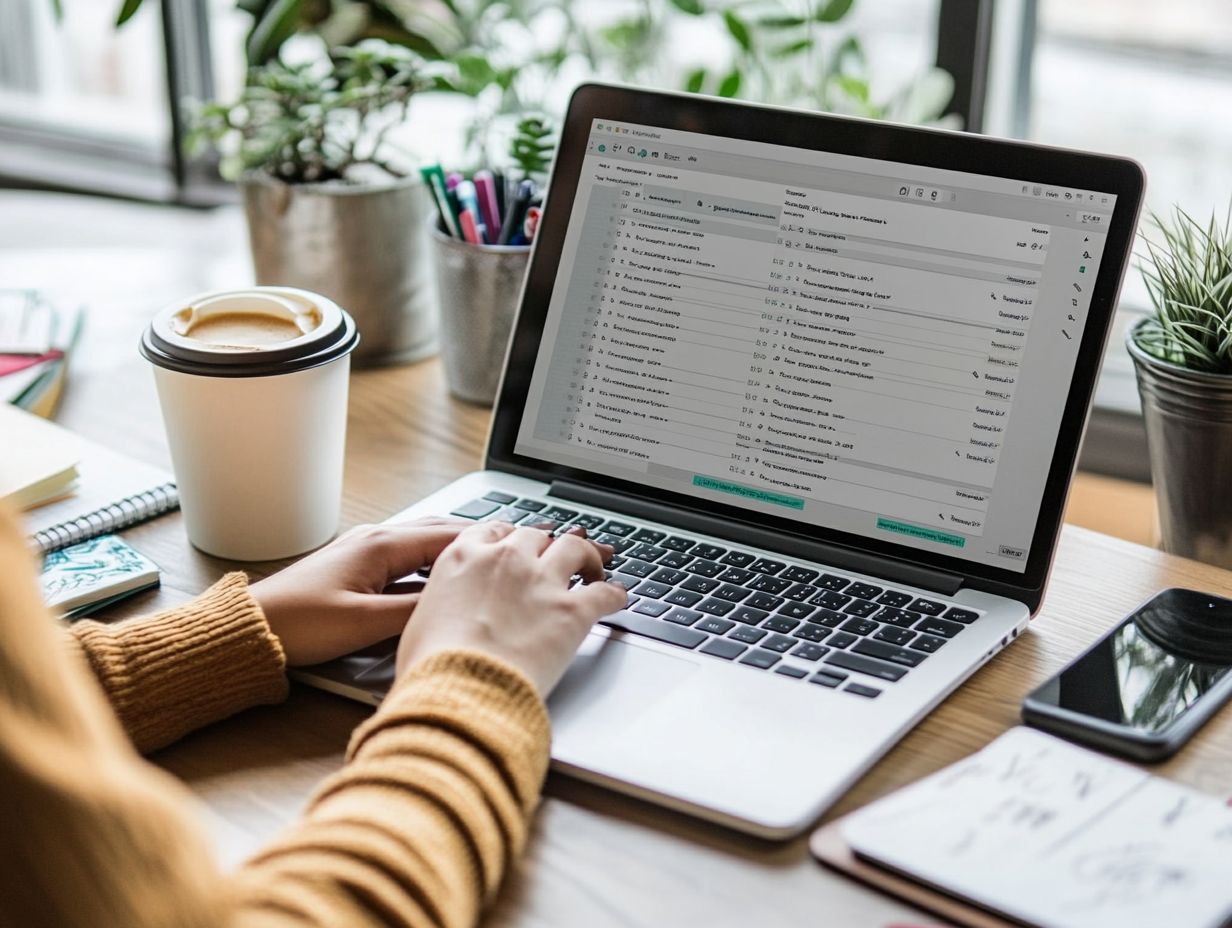
An effective subject line is essential in your follow-up messages. It directly influences your response rate and can determine whether your email is opened or overlooked.
Crafting a compelling subject line requires understanding your recipient’s interests and conveying urgency or value succinctly. Successful subject lines spark curiosity or present clear benefits, enticing the reader to engage. Personalization and action-oriented language can enhance effectiveness.
Consider A/B testing comparing two versions of a subject line to see which one works better. Keeping your subject lines concise ideally under 50 characters ensures readability across devices, increasing your chances of capturing attention.
Best Practices for Writing Follow-Up Emails
Crafting effective follow-up emails demands commitment to best practices that elevate engagement and ensure clarity. This includes using structured email reminders and well-designed follow-up templates featuring a clear call to action.
Doing so enhances the likelihood of capturing attention and prompting a response.
Writing Engaging and Persuasive Content
Crafting engaging and persuasive content in your follow-up emails is essential to keep your prospects intrigued. This motivates them to take action, whether providing feedback or responding to your offer.
To resonate, you should incorporate elements of storytelling that forge an emotional connection. For example, share a brief anecdote about a past client who faced similar challenges. This enhances relatability and builds trust.
You should clearly articulate a compelling value proposition, highlighting the tangible benefits the recipient stands to gain. This approach tackles objections head-on, making it easier for your recipient to say yes!
Using engaging styles, such as conversational tones and rhetorical questions, stimulates interest and fosters interaction. This transforms your email into an experience that is informative and enjoyable to read.
Using Call-to-Actions and Follow-Up Sequences
Incorporating effective call-to-actions and well-structured follow-up sequences can significantly enhance your engagement and conversion rates over time.
Let's Set Up Your Lead Generation Strategy
Fill out the form below, and our team will get in touch with you to create a tailored solution for your business.
These elements act as vital signposts, leading recipients to take action now! Clear call-to-action buttons clarify next steps and instill urgency, prompting quicker responses.
Implementing drip messages in your follow-up sequences helps cultivate meaningful relationships with your audience. This strategy nurtures leads through tailored content that resonates, keeping recipients engaged while smoothly progressing through the sales funnel.
Automating Your Follow-Up Process
Automating your follow-up process enhances your communication and boosts efficiency. This allows you, as a sales professional, to spend more time cultivating relationships.
By using various tools and techniques that integrate seamlessly with your CRM systems, you can optimize your workflow and drive better results.
Tools and Techniques for Automation

There are a wealth of automation tools at your disposal for email marketing, designed to simplify your follow-up routines. These tools also integrate seamlessly with your Customer Relationship Management (CRM) system, providing you with valuable insights into recipient engagement.
These platforms automate scheduling, but they also offer advanced reporting features that illuminate which campaigns resonate with your audience. With capabilities like comparing two versions of an email to see which performs better and audience segmentation, you can refine your approach based on data-driven insights.
Many of these tools enhance personalized interactions, allowing for dynamic content that aligns with each recipient’s unique preferences and behaviors. By leveraging these automation tools, you can elevate your email marketing strategies, ensuring sustained engagement and improved conversion rates.
Measuring the Success of Your Follow-Up Strategy
Measuring the success of your follow-up strategy is crucial for understanding its effectiveness. Track a range of metrics to gain valuable insights into response times, engagement levels, and the overall impact of your efforts.
This gives you clear insights into what works and what needs improvement, enabling you to optimize your approach for even greater results.
Tracking and Analyzing Metrics
Tracking and analyzing metrics related to your follow-up emails is essential for fine-tuning your strategy. This process lets you uncover which approaches yield the highest response rates.
By closely monitoring key indicators like email open rates, click-through rates, and response rates, you gain invaluable insights into your audience’s behavior and preferences. For example, a high open rate might indicate that your subject lines are compelling, while a low click-through rate could suggest that your content isn t resonating.
Analyze these metrics over time to make informed adjustments refining your email copy, experimenting with different send times, or honing your target segments. This thoughtful approach leads to a more effective and responsive email marketing campaign that truly resonates with your audience.
Frequently Asked Questions
What is a winning email follow-up strategy?
A winning email follow-up strategy is a planned approach to sending follow-up emails to potential clients or customers to increase the chances of converting leads into sales.
Why is a winning email follow-up strategy important?
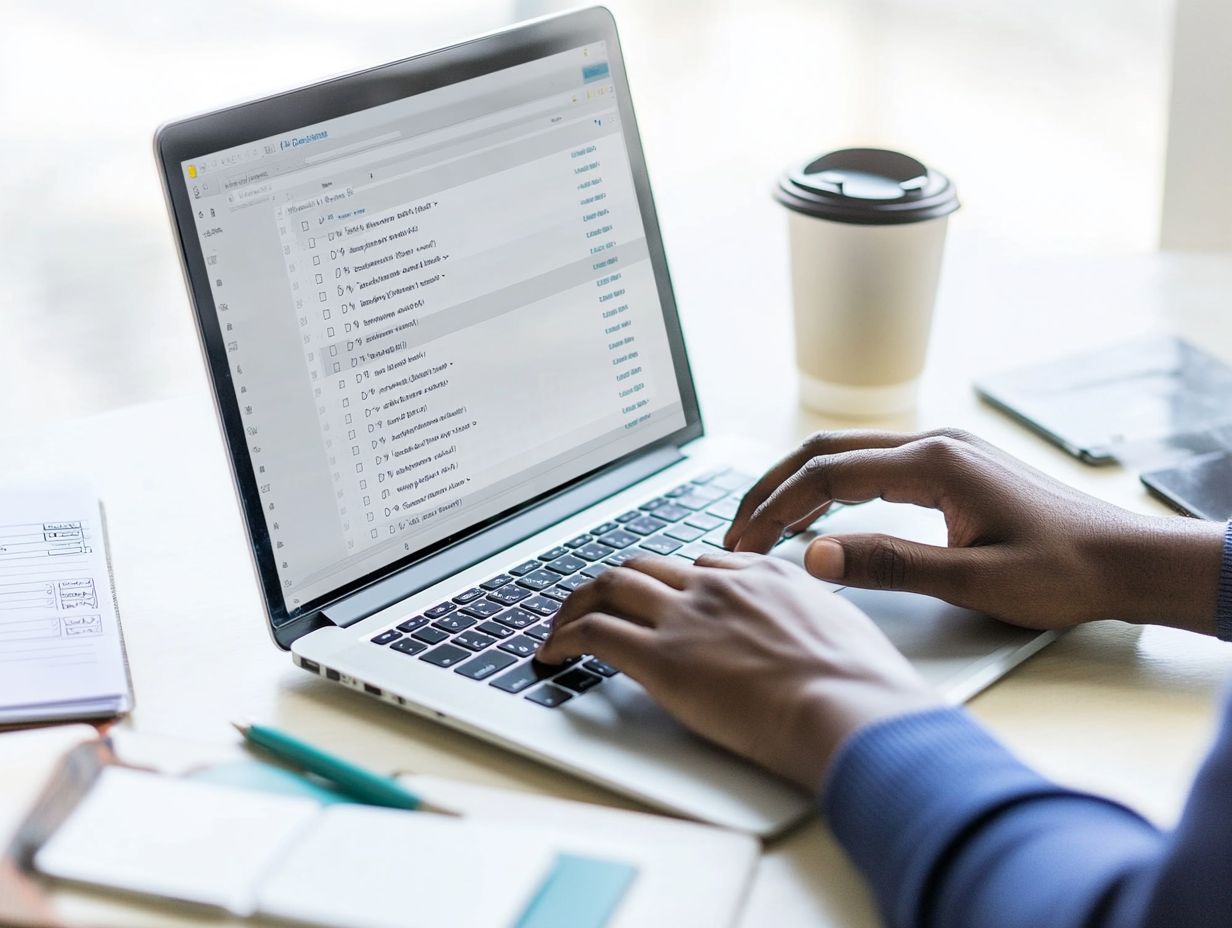
Let's Set Up Your Lead Generation Strategy
Fill out the form below, and our team will get in touch with you to create a tailored solution for your business.
A winning email follow-up strategy helps businesses stay top-of-mind with potential clients. It increases the chances of converting leads into sales and also helps build relationships and trust with prospects.
How can I create a winning email follow-up strategy?
To create a winning email follow-up strategy, you first need to define your target audience and set specific goals. Determine the frequency and timing of your follow-up emails. Create compelling and personalized content for each email, and track the results to make adjustments as needed.
What are some best practices for creating a winning email follow-up strategy?
Some best practices include segmenting your email list, personalizing your emails, keeping them short and concise, using a clear call-to-action, and offering valuable content or promotions to entice recipients to take action.
How can I measure the success of my email follow-up strategy?
The success of your email follow-up strategy can be measured by tracking metrics such as open rates, click-through rates, and conversion rates. You can also use customer feedback and sales data to assess effectiveness.
Start tracking your metrics today for better results! Implement these strategies to enhance your email follow-up approach and foster successful engagements with your audience.
What are some common mistakes to avoid when creating a winning email follow-up strategy?
When creating an effective email follow-up strategy, avoid these common mistakes: sending too many emails, failing to personalize content, and not following up at the right time. Also, ensure you track the results of your efforts.
Don t be too pushy or spammy in your follow-up emails. Keep it friendly and helpful!

